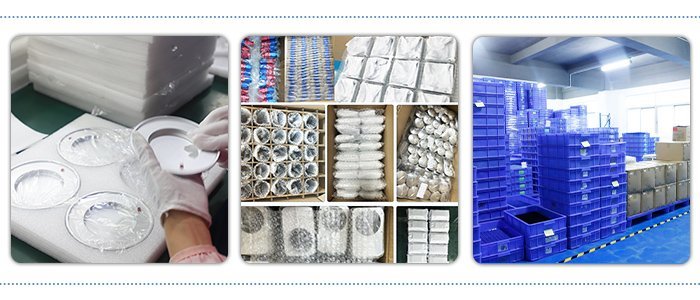In the world of manufacturing, precision is key, and CNC (Computer Numerical Control) machining is at the forefront of this precision. CNC machining involves the use of computers to control machine tools for the production of parts and components. This blog post will delve into the critical aspects of packaging and shipping for CNC machining parts, ensuring that your products arrive in the same pristine condition they left the factory.
Introduction to CNC Machining
Before we dive into packaging and shipping, let’s briefly understand what CNC machining is. CNC machining is a subtractive manufacturing process where material is removed from a workpiece to create or reveal a desired shape. This process is highly accurate and can produce complex parts with tight tolerances. CNC machining are programmed using G-code, which is a language that tells the machine how to move and cut the material.
The Importance of Proper Packaging
After a part has been CNC machining to perfection, the next step is to ensure it reaches the customer in the same condition. This is where proper packaging comes in. Packaging is not just about protecting the parts; it’s also about maintaining their quality and integrity during transit.
Why Packaging Matters
- Protection: Parts can be delicate, especially those with intricate designs. Proper packaging protects them from damage due to impacts, vibrations, or environmental factors.
- Prevention of Contamination: Packaging materials can act as a barrier against dust, moisture, and other contaminants that could affect the part’s performance.
- Ease of Handling: Well-packaged parts are easier to handle, reducing the risk of damage during loading and unloading.
- Branding: Custom packaging can enhance your brand’s image and provide a professional appearance.
Packaging Materials for CNC machining Parts
The choice of packaging materials depends on the nature of the parts and the distance they need to travel. Here are some common materials used:
- Plastic Bags: For basic protection against dust and light moisture.
- Bubble Wrap: Provides cushioning and protection against impacts.
- Foam: Can be cut to fit the shape of the part, offering excellent protection.
- Cardboard Boxes: Economical and provides a good level of protection.
- Wooden Crates: Ideal for heavy or large parts that require extra strength.
- Plastic Containers: Great for parts that need to be kept clean and dust-free.
Best Practices for Packaging CNC machining Parts
- Cleanliness: Ensure the parts are clean and free of any machining residue before packaging.
- Secure Fitting: Parts should be tightly secured to prevent movement within the packaging during transit.
- Labeling: Clearly label the packages with part numbers, weights, and any special handling instructions.
- Use of Desiccants: Include desiccants if the parts are sensitive to moisture.
- Environmental Considerations: Choose packaging materials that are recyclable or biodegradable where possible.
Shipping Considerations
Once the parts are packaged, it’s time to consider the shipping process:
- Choose the Right Carrier: Select a carrier that offers the right balance of cost, reliability, and speed.
- Insurance: Consider insuring high-value parts to protect against loss or damage.
- Tracking: Use a shipping method that provides tracking so you and the customer can monitor the shipment.
- Documentation: Ensure all necessary documentation, such as invoices and certificates of conformity, are included with the shipment.
Shipping Methods
- Ground Shipping: Best for domestic shipments and less urgent deliveries.
- Air Freight: Ideal for international shipments and time-sensitive orders.
- Sea Freight: The most cost-effective option for large, heavy parts being shipped internationally.
Conclusion
Proper packaging and shipping are crucial steps in the CNC machining process. By taking the time to ensure parts are well-packaged and shipped correctly, you can maintain their quality and protect your reputation as a manufacturer. Remember, the last impression a customer has of your product is when they receive it, so make sure it’s a good one.





